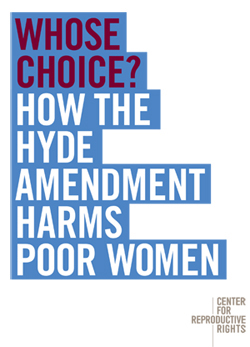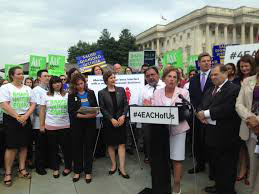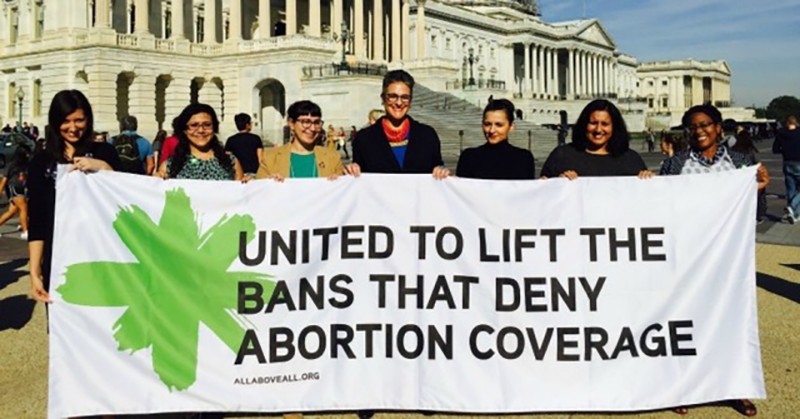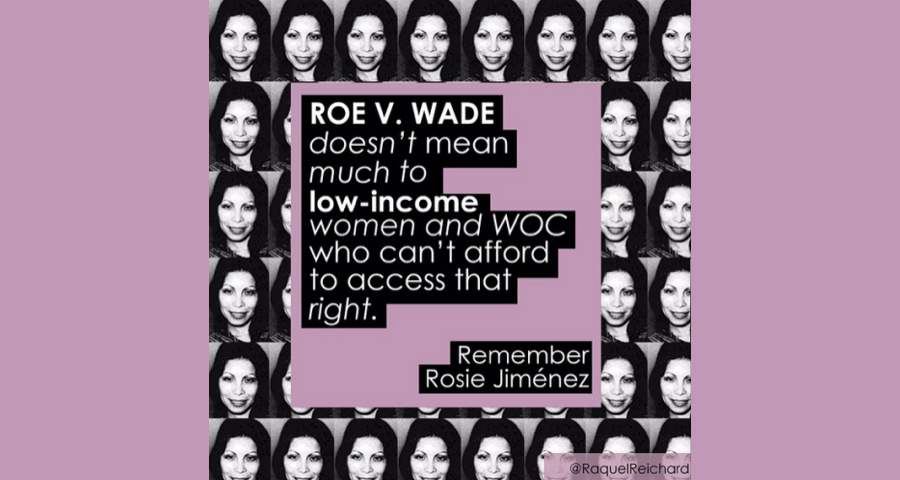All hell has broken loose and the keepers of the pro-choice flame are outraged. With the retirement of Justice Kennedy, who hot-footed over to the White House to say his adieus personally, President Trump has plenty of time to appoint a rock-ribbed conservative pro-lifer (no more of this “swing” vote nonsense) and get his choice confirmed by the Republican-controlled Senate. You know the kind he’s looking for— a wingnut determined to come between women and their uteruses.
Abortion in America has been a hotly-debated issue since 1821 when Connecticut became the first state to ban abortion. Soon most states followed suit. In 1973, the tide turned. With the 7-2 decision in Roe v. Wade, the Supremes agreed that the “right to privacy whether it be founded in the fourteenth amendment’s concept of personal liberty and restrictions on state action…or…in the ninth amendment’s reservation of rights to the people is broad enough to encompass a woman’s decision whether or not to terminate her pregnancy.” What should have set off alarm bells for pro-choice advocates but didn’t is how little women’s rights figured in the overall decision. What the Justices decided was to uphold the right of physicians (overwhelmingly male at the time) to practice medicine freely: “…the abortion decision… is inherently and primarily a medical decision and basic responsibility for it must rest with the physician.” It took almost 20 years until Planned Parenthood of Southeastern Pennsylvania v. Casey forced the Court to throw in the towel and declare affirmatively that women themselves had the constitutionally-protected right to choose an abortion. Of note, that bitterly contested 5-4 decision was decided by the “swing” vote of the first woman on the court, Justice Sandra Day O’Connor who, like Arthur Kennedy the current swing justice, was appointed by President Reagan.
As might be expected Roe aroused fierce opposition from a gaggle of mostly Republican congressmen. Unable to legislate the demise of Roe for all American women, they went after the low-hanging fruit —poor women on Medicaid, a federal health insurance program. Their venom also extended to women whose insurance was federally funded including government employees, Washington, D.C. residents, native Americans, women in the military, even women in the Peace Corps, 29 million women, the largest chunk and the focus of the right to life cabal being the 15 million women on Medicaid. Think of the other categories as “collateral damage.” The “brains” of the operation, Representative Henry Hyde, made no secret of his misogyny “I certainly would like to prevent…anybody having an abortion…Unfortunately the only vehicle available is the…Medicaid bill. Accordingly, in 1976, three years after Roe had legalized abortion for all women, Rep. Hyde used his congressional muscle to ram through Congress the amendment that carries his name.  The Hyde Amendment legalized the oppression of poor women by excluding them from the protections of Roe. Hyde was forced to make one exception —when the life of the mother was endangered. (In 1993, during the Clinton administration, the hypocritical dems continued to vote YES on the Hyde Amendment but broadened the exception to include pregnancies resulting from rape or incest.)
The Hyde Amendment legalized the oppression of poor women by excluding them from the protections of Roe. Hyde was forced to make one exception —when the life of the mother was endangered. (In 1993, during the Clinton administration, the hypocritical dems continued to vote YES on the Hyde Amendment but broadened the exception to include pregnancies resulting from rape or incest.)
Four years later, the final assault on the right of poor women to control their bodies occurred. This time the judiciary weighed in. On a 5-4 vote, Justices Burger, Stewart, White, Powell and Rehnquist upheld the constitutionality of the Hyde Amendment (Harris v. McRae). Ironically, a year later, the first woman Supreme Court justice, Sandra Day O’Connor, was appointed by President Reagan. It was her vote fifteen years later that preserved the abortion rights guaranteed by Roe, but left intact the injustices of the Hyde Amendment.
What has the Hyde Amendment wrought in 42 years? For openers, over one million women have been forced to have babies they did not plan for and could not by any stretch of the imagination support. The injustice is appalling — “it is fundamentally unjust and discriminatory for the government to deny women on Medicaid the same reproductive health rights as women with economic means.” (Marlene Fried, National Network of Abortion Funds)
Could the Hyde Amendment go the way of VCRs and princess phones? Easily. Hyde is not a law, but a rider that by vote of Congress is attached annually to every HHS (Health and Human Services) appropriations bill. Shockingly the rider has passed Congress every year since 1976, including years when Democrats were in control of both houses. Even the biggest supporters of Roe in Congress turn away from the microphones when the Hyde Amendment is mentioned. Should we expect better from at least one of them —the darling of the liberal community and of well-off women, Senator Elizabeth Warren? Here’s part of her fundraising pitch for the “Progressive” Campaign Committee: “… if the Supreme Court overturns Roe v. Wade millions of women will be at the risk of losing their access to safe and legal abortions. Women could lose control over their own bodies…” Is it too uncivil to ask: What about the millions of women who already have “lost their access to safe and legal abortions and control over their own bodies”?
Clearly, for democratic lawmakers, the prospect of closed abortion clinics and a defunded Planned Parenthood are unmitigated outrages. The plight of millions of women for whom affordable abortions are the impossible dream since 1976 arouses little more than a mumble about Hyde being “the law of the land.”

Not until 2015 when a new generation of women politicians started trickling into Congress did a new push emerge to send Hyde to a well-deserved grave. The EACH Woman Act, among the two or three bills making their way through the congressional approval maze, aims to restore abortion coverage in all federally funded insurance plans. Like most bills that would help the less wealthy and privileged, the bill has generated little “buzz” either in Congress or among the public. Its supporters like Barbara Lee, congresswoman and long-time abortion rights supporter, are bound and determined to continue fighting to overturn Hyde: “I’ve been fighting the Hyde Amendment for 40 years, and we are finally on the offensive. The current groundswell of support is nothing like I’ve seen before. I truly believe this is a battle we can win. More than that, it’s a battle we must win.
How badly are poor women affected by their inability to secure affordable abortions? Listen: “Of the woman who report that Medicaid isn’t paying for their abortion, most are already food- or housing-insecure. They skip meals or they’re unable to pay their rent…” (Sarah Roberts, public health social scientist). In 2010, Obama promised to lighten the load for poor women proclaiming that Obamacare “will set in motion reforms that generations of Americans have fought for and marched for and hungered to see … affirming the essential truth… that we are not a nation that scales back its aspirations.” In her 2016 presidential campaign, Hillary Clinton doubled down on what turned out to be a phony claim — “[Obamacare is] putting quality, affordable health care within reach of everyone…”
Not if you’re poor, pregnant and on Medicaid. Despite Obama’s stirring verbiage, the health care needs of poor women were never a cause he was willing to fight for. In the end Hyde Amendment restrictions on Medicaid remained part of Obamacare. The bill actually catered to the anti-abortion crowd, giving states the expanded option to restrict abortion coverage even in state-regulated private health care plans.
Where do the biggest and wealthiest abortion rights non-profits stand on this outrage? After all they have had forty-two long years to come up with a campaign to right the wrongs inflicted on 20% of women of child-bearing age in America. Their lack of action is incontrovertible evidence that, like Democratic congresswomen, the fate of poor women isn’t high on their priority list. Instead they continue to spend millions to elect pro-choice democratic women whose campaign promises to protect the pro-choice rights, not of all women, but of those who don’t need Medicaid to pay for their abortions. In May, NARAL (the premier abortion-rights group) pledged $5 million dollars to “take back the House with a pro-choice majority and expand on the already impressive work we’ve done to defend our essential rights.” Planned Parenthood forced out of many states for lack of funding was still able to come up with $20 million for political donations to get the “right” politicians elected. How many abortions for poor women would $20 million have paid for?
And the beat goes on, at least in the House. With Trump’s victory in 2016, anti-abortion forces felt emboldened enough to pass H.R. 7 No Taxpayer Funding for Abortion and Abortion Insurance Full Disclosure Act, which, true to its name, aims to make the Hyde Amendment automatically part of every appropriations bill. The reaction of the pro-abortion rights community? In a word, underwhelming. A fiery statement but no organized protests. It’s particularly shameful that politicians in Congress are voting to restrict a woman’s ability to get basic health care services…” (Nancy Northrup, Center for Reproductive Rights)
When it comes to “restricting a woman’s ability to get basic health care services, the Hyde Amendment has been successfully doing that since 1976 with the consent of every Congress. Let’s face it, H.R. 7 is not the immediate problem. The Hyde Amendment is. It’s time for politicians and leaders of prominent women’s non-profits to get off their duffs and support legislation that prohibits all funding restrictions on abortion for rich and poor women alike. The public is already on-board. In 2015, a Hart Research poll found that 76% of voters agree with the statement that “politicians should not be allowed to deny a woman’s health coverage for abortion because she is poor.”
Major non-profits particularly NARAL and Planned Parenthood along with the politicians that they fund need to get the message: preserving Roe is only half the battle. The other half is insuring that the rights protected in Roe are extended to all women. How about it Senator Warren? How much longer must American women live under a health care system that is neither fair nor equal? In the land of the free and home of the brave, trampling on poor women’s rights but spending millions to protect the same rights of rich women doesn’t pass the sniff test. Not in exceptional America.

889 total views, 1 views today

